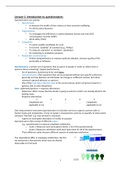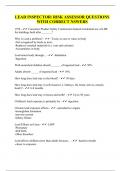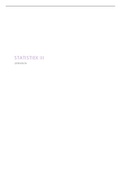Summary
Summary Construction and Analysis of Questionnaires (424242-B-6)
- Course
- Institution
All lectures from Construction and Analysis of Questionnaires (-B-6) (Tilburg University). I used a lot of graphs, figures and examples to make it more clear. Furthermore, I used different colors for different lectures which gives it a nice overview. Some of the topics are: Factor Analysis, Compone...
[Show more]





